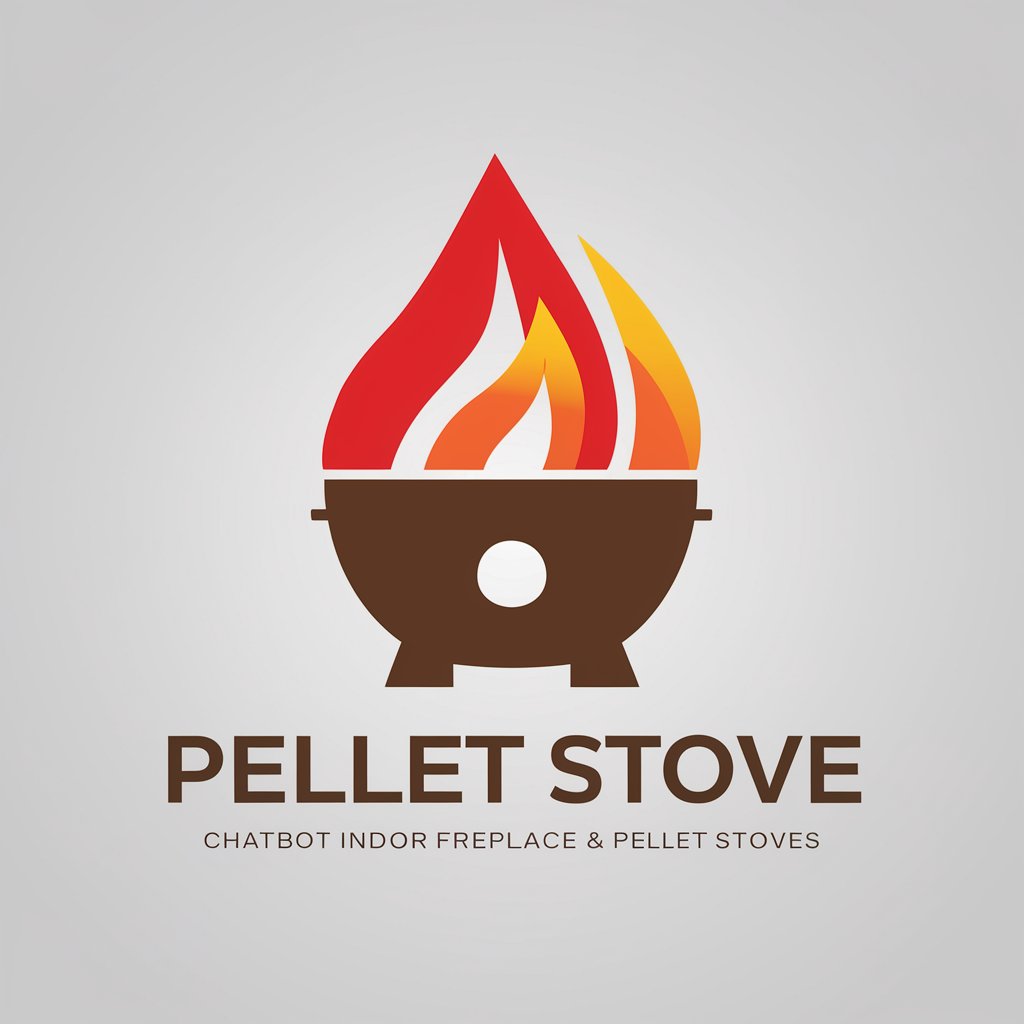Pellet Stove - Indoor Heating Guide

Hello! Ready to learn about fireplaces and pellet stoves?
Warmth, Powered by AI
What are the main types of indoor fireplaces available?
Can you provide maintenance tips for pellet stoves?
How do pellet stoves compare to traditional wood-burning stoves?
What are the benefits of using a gas fireplace?
Get Embed Code
Overview of Pellet Stoves
Pellet stoves are sophisticated home heating devices that burn compressed wood or biomass pellets to generate heat. Designed for efficiency, convenience, and sustainability, they offer a modern alternative to traditional wood-burning stoves or fireplaces. Key components include a hopper for pellet storage, an auger that feeds pellets into the burn chamber, a combustion blower that provides air to fuel the fire, and a convection blower to circulate heated air into the room. These stoves are programmable and can be adjusted for temperature and timing, providing a consistent heat source with less manual intervention than wood stoves. For example, a pellet stove can be programmed to ignite before you wake up, ensuring your home is warm on a cold winter morning without the need to start a fire manually. Powered by ChatGPT-4o。

Key Functions and Real-World Applications
Automated Fuel Feeding
Example
The auger system in pellet stoves automatically feeds pellets from the hopper into the burn chamber, maintaining a steady fire with minimal effort.
Scenario
In a scenario where a homeowner desires a warm living space throughout the evening, the stove can be set to operate at a desired heat output level, automatically replenishing the pellet supply as needed without manual intervention.
Programmable Heating
Example
Most modern pellet stoves come with programmable thermostats and timers, allowing users to set heating schedules according to their daily routines.
Scenario
For instance, a user can program the stove to increase the temperature in the early morning hours before waking up and reduce it during the day if the house is empty, ensuring comfort while optimizing fuel consumption.
Eco-Friendly Heating
Example
Pellet stoves utilize biomass pellets made from compressed sawdust and other wood waste, offering a cleaner burn with lower emissions compared to traditional wood-burning methods.
Scenario
In environmentally conscious households looking to reduce their carbon footprint while staying warm, a pellet stove serves as an ideal heating solution, leveraging renewable resources for efficient home heating.
Target User Groups for Pellet Stoves
Environmentally Conscious Consumers
Individuals or families prioritizing sustainability and eco-friendly living are ideal users. They benefit from the stove's efficient use of biomass, a renewable energy source, and its low emissions, aligning with their environmental values.
Homeowners Seeking Efficient Heating Solutions
Homeowners looking for an efficient, cost-effective heating solution find pellet stoves appealing. The stoves provide a consistent heat source with automated features that simplify operation and maintenance, suitable for modern lifestyles.
Technology Enthusiasts
Those intrigued by smart home technologies and innovative heating solutions are drawn to pellet stoves for their programmability, remote control options, and integration into home automation systems, offering a blend of comfort and technology.

How to Use Pellet Stove
Initiate Your Experience
Start by exploring pellet stove options without the need for a subscription or account setup at yeschat.ai, offering a hassle-free entry into pellet stove usage.
Selecting the Right Pellets
Ensure you have high-quality, suitable pellets for your stove. Hardwood pellets are recommended for their high energy efficiency and low ash content.
Loading the Pellets
Fill the stove's hopper with pellets. Ensure the hopper is clean and free of debris to avoid feeding issues.
Adjusting Settings
Use the stove's control panel to set the desired temperature and combustion rate. Consider starting with a lower setting to gauge the heat output.
Regular Maintenance
Clean the ash drawer, heat exchanger, and air inlets regularly to maintain optimal efficiency and safety. Schedule professional inspections annually.
Try other advanced and practical GPTs
Water Heaters
Empowering Warm Comfort with AI

Lexideck Writing Multi-Agent Workshop
AI-Powered Collaborative Writing Workshop

Hockey GPT
Revolutionizing hockey analytics with AI

Food Services Management
Optimizing food services with AI

Food Service Management
AI-powered culinary and operational excellence

Food Processor
Empowering Culinary Creativity with AI

Freezer
Empowering your cold storage decisions with AI.

SEO-Focused GPT
Empowering SEO with AI Insight

New Driveway
AI-powered driveway expertise at your fingertips.

ACR Copywriter
Empowering Your Words with AI

Decor Scout
Discover, Decorate, Delight with AI

Cash+ Program Home Advisor
Maximize Your Home Sale with AI

Frequently Asked Questions About Pellet Stove
What makes pellet stoves environmentally friendly?
Pellet stoves are considered environmentally friendly due to their use of biomass pellets, made from recycled wood waste, which burns cleaner and more efficiently than traditional firewood, reducing greenhouse gas emissions.
Can I heat my entire home with a pellet stove?
Yes, depending on the size and layout of your home, as well as the stove's capacity. Pellet stoves can be primary or supplementary heat sources, efficiently heating spaces when properly sized and placed.
How often do I need to refill the pellet stove?
Refill frequency depends on the hopper size, the stove's heat setting, and how continuously it's run. On average, a stove may require refilling every 1 to 2 days during constant use.
What maintenance does a pellet stove require?
Regular maintenance includes emptying the ash pan, cleaning the burn pot, checking the hopper and auger for debris, and inspecting the venting system. Annual professional servicing is also recommended.
Can pellet stoves work during power outages?
While most pellet stoves require electricity to operate, some models are equipped with battery backups or can be connected to a generator, allowing them to function during power outages.
